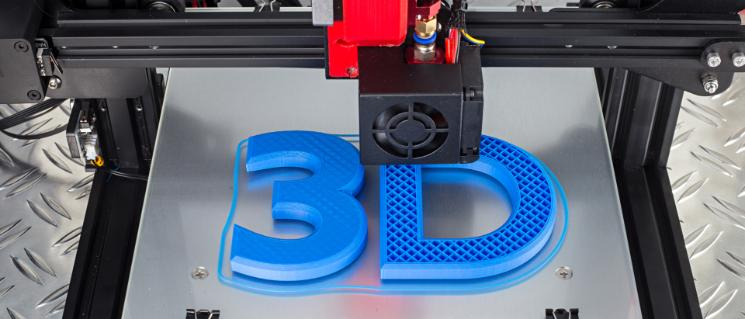Can DMPK Predict Drug–Drug Interactions Safely?
Drug–drug interactions (DDIs) remain a critical challenge in clinical pharmacology. DMPK (Drug Metabolism and Pharmacokinetics) offers valuable insights by investigating how different drugs can interact with each other within the body. By employing diverse analytical processes, DMPK facilitates safer drug development and clinical application, aimed at minimizing adverse effects associated with DDIs. These methodologies, encompassing both in vitro and in vivo studies, along with ADME (Absorption, Distribution, Metabolism, and Excretion) analysis, contribute to a comprehensive understanding of potential DDIs. This article provides a detailed look into how DMPK operates in predicting DDIs, examines WuXi AppTec’s real-world capabilities, and anticipates future advancements in this arena.

Methods Used in DMPK for DDI Prediction
DMPK employs several scientific methods to predict drug-drug interactions. These include in vitro ADME assays, metabolism-mediated studies, transporter-mediated studies, and in vivo PK studies. Each method offers unique insights into DDIs.
In Vitro ADME Assays
In vitro ADME assays are crucial in the early stages of drug development. Researchers use these assays to analyze how a drug is absorbed, distributed, metabolized, and excreted in controlled environments. Cells, tissues, and enzymes are utilized to simulate human responses, providing initial data on drug interactions. These tests are economically efficient and allow for a high-throughput screening of multiple compounds. By measuring enzyme inhibitions or inductions, researchers can predict how a drug might alter the metabolism of another, identifying potential DDIs before clinical trials. This proactive approach minimizes risks and streamlines the drug development process, ensuring that only the safest candidates advance to in vivo testing.
Metabolism-Mediated DDI Studies
Metabolism-mediated studies assess how drugs influence metabolic processes in the body, with a focus on enzyme activity. Cytochrome P450 enzymes, significant in drug metabolism, are frequently studied to predict DDI potential. Through these studies, scientists evaluate whether a drug inhibits or induces these enzymes, affecting the metabolism rate of co-administered medications. Such interactions can lead to decreased efficacy or increased toxicity of the affected drugs. Employing metabolism-mediated studies, researchers can identify whether a new drug alters pharmacokinetic properties, which guides dose adjustments and formulates safety guidelines for concurrently administered therapies, promoting safer drug use and patient safety.
Transporter-Mediated DDI Studies
Transporter-mediated DDI studies explore how drugs interact with transport proteins that facilitate molecular movement across cellular membranes. These transporters, including P-glycoprotein and organic anion-transporting polypeptides, play crucial roles in drug absorption, distribution, and elimination. By examining how one drug might inhibit or block a transporter, researchers can predict alterations in another drug’s bioavailability and distribution. This knowledge is critical for preventing adverse effects arising from altered drug concentrations. Transporter studies help in understanding DDI risks and are integral in the development of safe, efficacious dosing regimens, ensuring therapeutic goals are met without compromising patient health.
In Vivo PK and Radiolabeled ADME Studies
In vivo pharmacokinetic (PK) and radiolabeled ADME studies involve administering drugs to living organisms to observe their pharmacokinetic profiles in real-time. These studies provide comprehensive data on how drugs behave in a biological system, including absorption, distribution, metabolism, and excretion pathways. Radiolabeled compounds offer precise tracking of drug molecules throughout the body, aiding in identifying possible DDIs. By simulating real-world conditions, in vivo studies corroborate in vitro findings, confirming drug interactions and revealing potential risks. This holistic examination is vital for accurate DDI prediction and helps refine dosage and combination strategies, bolstering patient safety and therapeutic efficacy.

WuXi AppTec DMPK: Real-World Capabilities
WuXi AppTec offers robust DMPK solutions, equipped with advanced technologies and skilled personnel to tackle DDI challenges.
In Vitro & In Vivo DDI Support
WuXi AppTec provides extensive in vitro and in vivo support for DDI studies. Utilizing state-of-the-art facilities, their team conducts high-throughput in vitro assays to evaluate metabolic pathways and transporter activity. They deploy sophisticated in vivo technologies, including non-invasive imaging, to trace drug movement and assess real-world interactions. WuXi AppTec ensures comprehensive analysis through integrated data interpretation, leading to informed decision-making in drug development. Their services provide clients with detailed DDI evaluations, helping in devising safer and more effective drug regimens, ultimately maximizing therapeutic potential and minimizing adverse risks.
Broad ADME Platforms & Novel Modalities
WuXi AppTec harnesses broad ADME platforms and novel modalities to enhance DDI prediction accuracy. They provide tailored solutions employing cutting-edge techniques to cover diverse drug properties across various therapeutic areas. By integrating novel modalities such as proteomics, metabolomics, and genomics, WuXi AppTec refines predictions and mitigates DDI liabilities. These innovative approaches deliver precise mechanistic insights into drug-drug interactions, supporting pharmaceutical advancements. Their holistic platform ensures that clients receive valuable data, promoting the development of new, optimized therapeutic strategies aligned with safety and efficacy requirements.
Benefits of Using DMPK for DDI Prediction
DMPK provides numerous advantages in predicting DDIs. Employing DMPK in early drug development phases significantly reduces the risks of adverse events by identifying potential interactions before clinical settings. The analytical precision of DMPK methods enhances understanding of how drugs influence enzymatic activity and transporter efficacy, informing safer combination therapies. These predictive models assist in formulating precise dosage recommendations, improving drug safety profiles, and facilitating regulatory approvals. Employing DMPK, researchers can optimize pharmacotherapies, maximize patient compliance, and minimize therapeutic failures, contributing to a more sustainable healthcare ecosystem.
Future Directions in DMPK-DDI Prediction
Future advancements in DMPK for DDI prediction will involve increasingly precise and holistic approaches. Integration of artificial intelligence and machine learning technologies offers potential for enhancing predictive accuracy and efficiency. Big data analytics will facilitate more comprehensive interpretation of complex datasets, enabling better identification of potential DDIs. Further exploration of novel molecular modalities, such as biologics and gene therapies, will expand the prediction scope. These innovations promise not only improved predictive capabilities but also more personalized therapeutic strategies, allowing for tailored dosages and combinations specific to individual patient profiles, fostering a new era of precision medicine.
Conclusion
Drug–drug interaction prediction through dmpk significantly enhances patient safety and drug efficacy. By employing diverse methodologies, including in vitro and in vivo studies, DMPK provides critical insights into how drugs interact within the body. With the help of industry leaders like WuXi AppTec, these methods are continually refined for more accurate predictions. Looking forward, innovations in data analytics and personalized medicine hold the promise of even safer therapeutic strategies. As DMPK evolves, it will play an indispensable role in optimizing drug therapies, ensuring safer health outcomes for patients worldwide.
Copyright © 2023 guideforests.com. All rights reserved.







